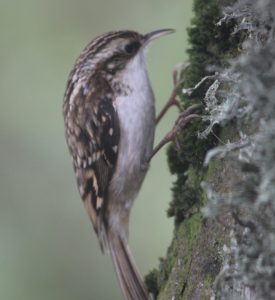 If you go into any garden centre these days you will see a wide range of food, feeders and nest boxes for a wide range of not only birds but also mammals such as hedgehogs and red squirrels. However, one aspect that is often overlooked is the bird bath and yet, particularly in the winter months, this is essential for birds. We tend to think that bird baths are just for drinking such as the wren I watched in the garden today. The bird had been foraging at the base of a fruit tree and then, suddenly, it darted to the bird bath. It perched on the edge and then leant over and it was almost comical as it nearly overbalanced and fell in. A few sips and it was off foraging again. In contrast the next bird to drink was a large, fat looking woodpigeon and it leant forward just like the wren. However, the woodpigeon is very unusual as they do not have to throw their heads back but can scoop the water up like a siphon. However, whilst drinking is important, the real purpose of the bird bath is, as the name rightly suggests, for the birds to bathe. This enables them to keep their feathers, and plumage in general, in good condition and this is essential to combat the frost and ice in the winter months. Some garden centres do stock bird baths but these are often of a fancy design and expensive. Mine is large black perspex tray about three inched deep and I put this on the ground rather than raised up. What is essential with bird baths is that they vary in water depth so that different sized birds can bathe. I achieve this by putting two large flat stones in the water so varying the depth.
If you go into any garden centre these days you will see a wide range of food, feeders and nest boxes for a wide range of not only birds but also mammals such as hedgehogs and red squirrels. However, one aspect that is often overlooked is the bird bath and yet, particularly in the winter months, this is essential for birds. We tend to think that bird baths are just for drinking such as the wren I watched in the garden today. The bird had been foraging at the base of a fruit tree and then, suddenly, it darted to the bird bath. It perched on the edge and then leant over and it was almost comical as it nearly overbalanced and fell in. A few sips and it was off foraging again. In contrast the next bird to drink was a large, fat looking woodpigeon and it leant forward just like the wren. However, the woodpigeon is very unusual as they do not have to throw their heads back but can scoop the water up like a siphon. However, whilst drinking is important, the real purpose of the bird bath is, as the name rightly suggests, for the birds to bathe. This enables them to keep their feathers, and plumage in general, in good condition and this is essential to combat the frost and ice in the winter months. Some garden centres do stock bird baths but these are often of a fancy design and expensive. Mine is large black perspex tray about three inched deep and I put this on the ground rather than raised up. What is essential with bird baths is that they vary in water depth so that different sized birds can bathe. I achieve this by putting two large flat stones in the water so varying the depth.
Cold winter nights can mean that, with a small bird such as a goldcrest that only weighs 5 gms, it can lose a fifth of its body weight in just one night. Such birds still persist in roosting alone as does the tree creeper illustrated here and the latter seeks out a crevice in bark and squeezes in for the hours of darkness. Another bird that is normally solitary may adopt a different method if the nights are really cold and that is the wren. Against all their normal behaviour of living alone they will gather and form a roost to keep each other warm for the night. The roosting site can vary from a hole in a tree to nest boxes and such communal roosts have been recorded as containing 60 wrens or more although most are much smaller. The record is 61 wrens in a nest box followed closely by 30 in a hole in a tree. In Strathnairn, a few miles south of Inverness, there is a regular winter roost of up to eight wrens in an artificial nest box designed for house martins. Sadly if the cold persist the whole roost may die overnight and it a sad experience to see such a sight.
There is another way of combating the cold nights and that is chosen by long-tailed tits. As many readers will know by these delightful birds coming into the garden to feed they go around in flocks, sometimes up to a dozen birds or more. At night they will huddle together on a branch side by side. Research has shown that the dominant birds are in the centre as by huddling up to the birds on either side they extract warmth. It must be a remarkable sight to see such a line of these tiny birds.
Tags: highland birds
